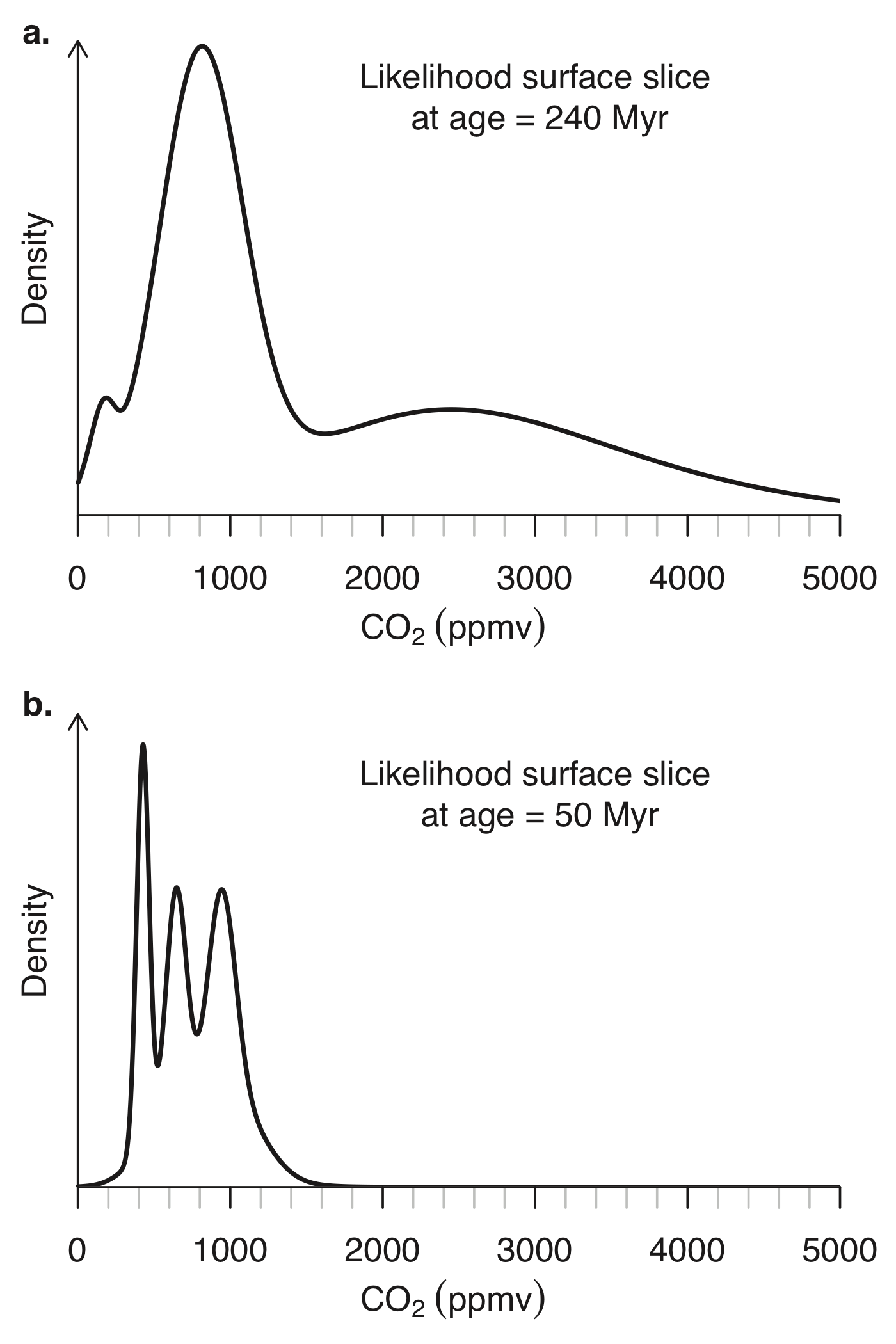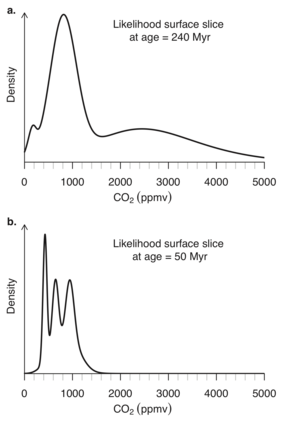The long-term temperature response to a given change in CO2 forcing, or Earth-system sensitivity (ESS), is a key parameter quantifying our understanding about the relationship between changes in Earth's radiative forcing and the resulting long-term Earth-system response. Current ESS estimates are subject to sizable uncertainties. Long-term carbon cycle models can provide a useful avenue to constrain ESS, but previous efforts either use rather informal statistical approaches or focus on discrete paleoevents. Here, we improve on previous ESS estimates by using a Bayesian approach to fuse deep-time CO2 and temperature data over the last 420 Myrs with a long-term carbon cycle model. Our median ESS estimate of 3.4 deg C (2.6-4.7 deg C; 5-95% range) shows a narrower range than previous assessments. We show that weaker chemical weathering relative to the a priori model configuration via reduced weatherable land area yields better agreement with temperature records during the Cretaceous. Research into improving the understanding about these weathering mechanisms hence provides potentially powerful avenues to further constrain this fundamental Earth-system property.
翻译:长期的碳循环模型可以提供一个有用的途径来限制ESS,但以往的努力要么采用非正式的统计方法,要么侧重于离散的浅色事件。在这里,我们采用巴伊西亚办法,利用长期碳循环模型,将过去420年的二氧化碳和温度数据结合到过去420年的Myers上,从而改进了以往的ESS估计数。我们的ESS中位估计值为3.4 deg C(2.6-4.7 deg C;5-95%的范围),其范围比以往的评估要窄。我们显示,与通过减少气候可变土地面积的先前模型配置相比,较弱的化学天气与前期模型配置相比,在Cretaceous期间,与温度记录相比会更好。研究如何增进对这些天气机制的了解,从而提供了进一步限制这一基本地球系统特性的潜在有力途径。





